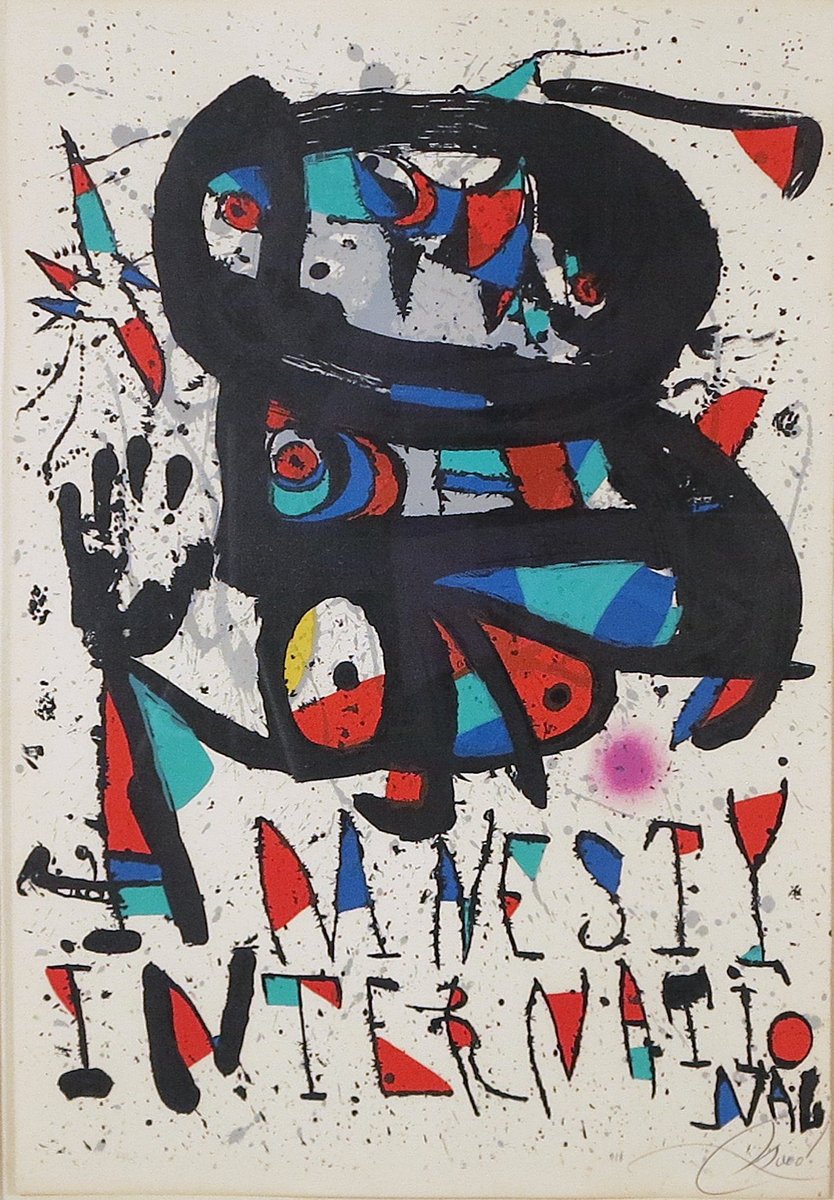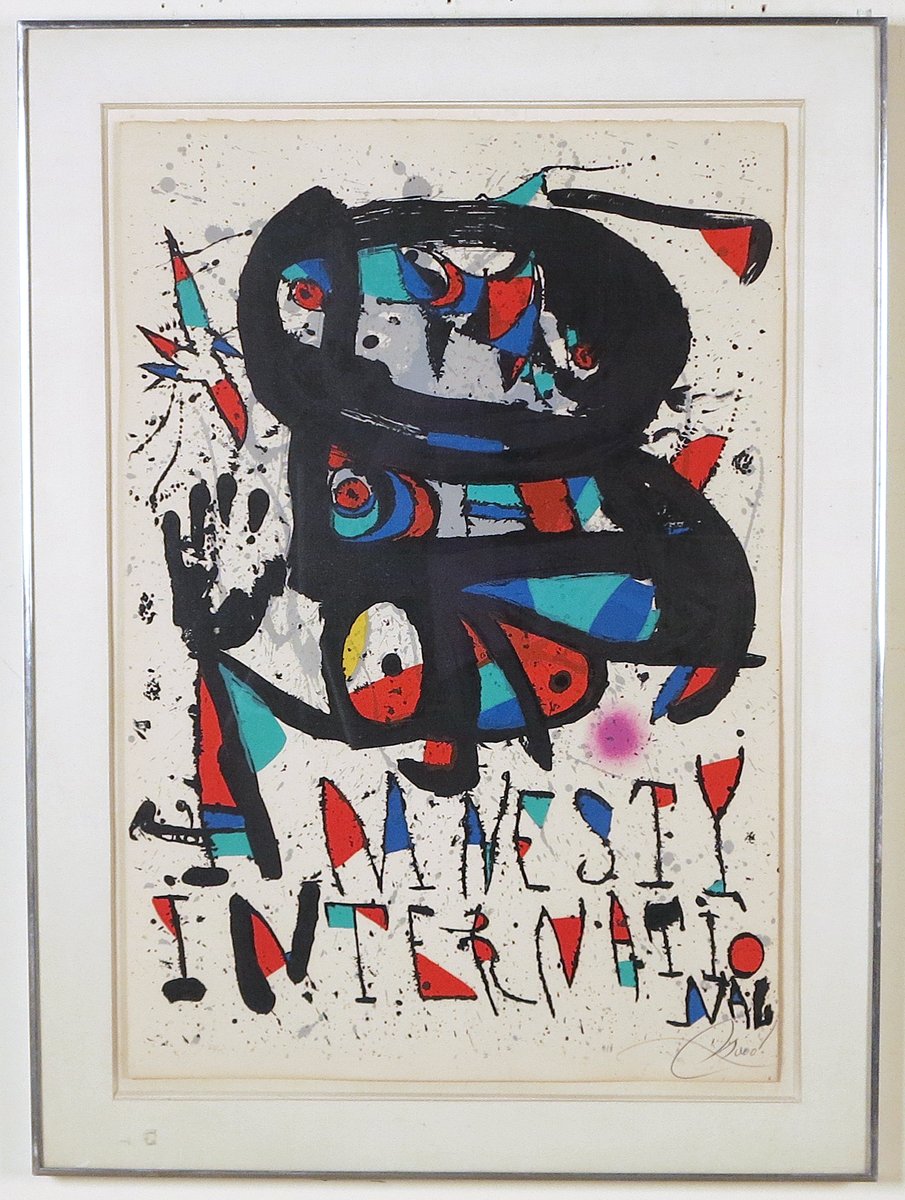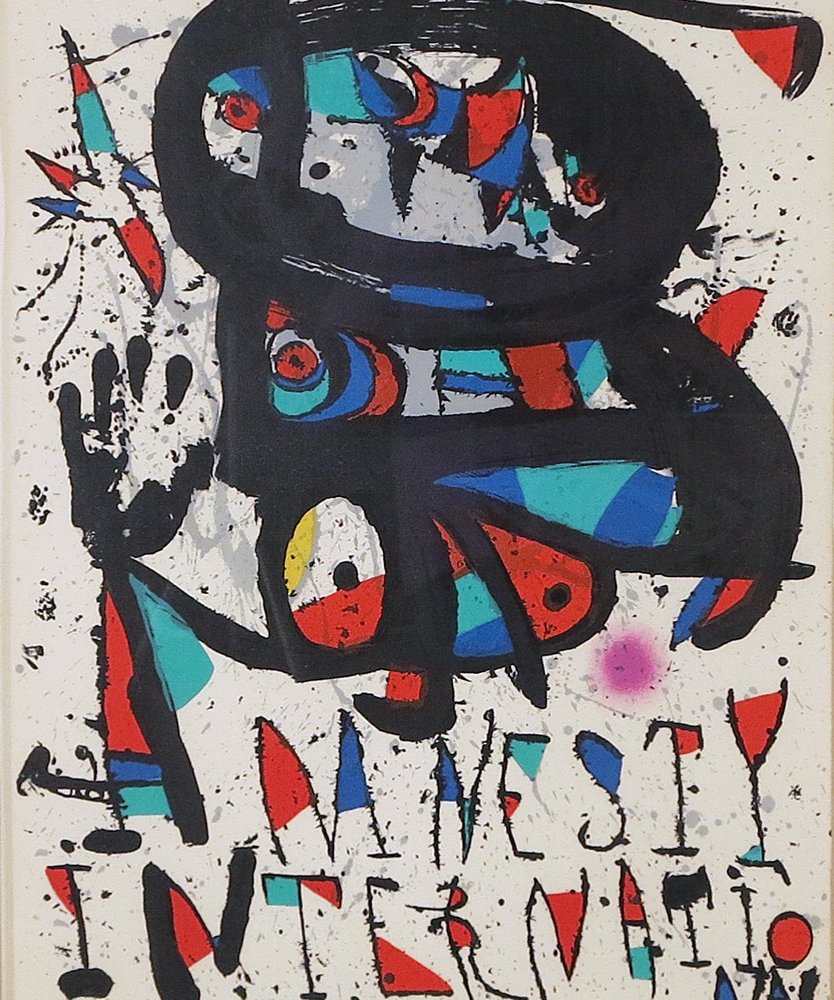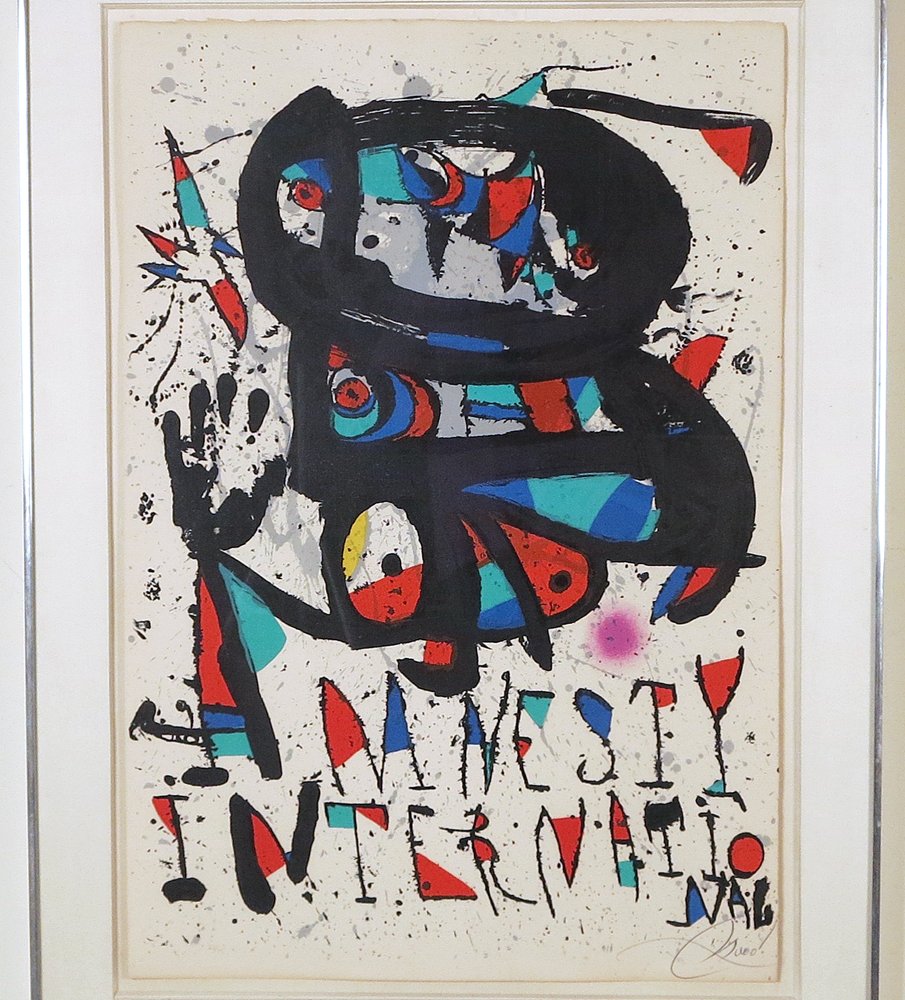Works on Paper
Joan Miro
Spanish, 1893–1983Amnesty International
Color Lithograph35 by 24 in. W/frame 42 by 31 in.
22/75 Edition size
Circa 1975 New York
Artists for Amnesty, a series of art posters and signed and numbered prints created by fifteen world renowned artists of the time to focus on Amnesty International’s Prisoners of Conscience Year 1977, was exhibited between February and March of 1977 in the Washington Place windows of New York University’s Grey Art Gallery. Signed and Numbered out of 75 in pencil. Some visible marks but overall in very good condition. Miro?s art is based on the purity of poetic emotion and spontaneity of execution. The artist also found his favorite medium in lithography. The importance of his graphic work, continuous renewal and enrichment of his style show the high value which the artist attached to this medium of expression. Miro uses black ink with a range of values and refined tones, reaching wild and playful effects. With elements derived from Catalan traditional art and a spatiality, Miro gave his objects and symbols a proper life as subjects of stories from other worldly microcosms - the ideal reflection of a world longed for by the artist.
Joan Miró Lithographs:
Miró’s close relationship with Fernand Mourlot resulted in the creation of over one thousand different lithographic editions. His process of automatic drawing, allowing the hand to move randomly on the surface, leaving the artwork to chance, enabled him to create works that were genuine reflections of himself, an integral part of his popularity. A popularity that still remains today as they make for 91% of all of his works bought on the market, with a complete set of Le lézard aux Plumes d’Or (1971) selling for over $147, 510 in 2002 from Christie’s.
A true master of the printmaking medium, Miró received the Grand Prize for Graphic Work at the Venice Biennale in 1954, and his work was included in the first Documenta exhibition in Kassel the following year. In 1958, he was given a Guggenheim International Award for murals for the UNESCO building in Paris and the following year he resumed painting, initiating a series of mural-sized canvases. During the 1960s, he began to work intensively in sculpture and was particularly captivated by glass as is evidenced in his commissioned mural Personnage Oiseaux (1972-1978) which combines one million pieces of marble and Venetian glass. A man whose art rose to international acclaim with the help of the Surrealist movement, Miró was honored with many retrospectives during his lifetime and worked until he passed away of heart disease in December 25, 1983, in Palma de Mallorca, Spain.
22/75 Edition size Circa 1975 New YorkProvenance:
Private Collection New York
Le Trianon Fine Art & Antiques
See Artist Bio below.
Joan Miro
Spanish, 1893–1983Joan Miro was born in Barcelona, Spain on April 20, 1893, the son of a watchmaker. From 1912 he studied at the Barcelona Ecole des Beaux-Arts and the Academie Gali. In the first quarter of the 20th century, Barcelona was a cosmopolitan, intellectual city with a craving for the new in art, music and literature. But it was not the place where great art was being made. That place was Paris and Miro established himself there at the age of twenty-six. He made friends with Pablo Picasso, Alexander Calder, Ernest Hemingway, Max Ernst and Paul Klee and was accepted as a Surrealist, looking stronger as the years went by. He lived alone in Paris in total poverty, but everytime he went out he wore a monocle and white spats. He kept his brushes clean, waxed and polished the floor of his studio and arranged his canvases in neat order.
Miro went about his career with orderly determination. He wrote to Picasso in 1929 that he was looking for a studio, a dealer and a wife. That same year he married the daughter of family friends. Her name was Pilar Juncosa and they were happily married in 1929 and were together for fifty-four years. They had one daughter, Dolores.
Miro was certainly the most distinguished painter of Catalonia; he was intensely proud of that fact. All of his work was conceived in Montroig (the site of his family’s farm). Most important of these was the painting named The Farm which did not sell in Paris and was sold finally to Ernest Hemingway for $250.
He was the most enduring of the Surrealist artists; he first visited the United States in 1947 in order to execute a mural Commission in Cincinnati, Ohio. His reputation had preceded him and he had already had enormous influence on such American artists as Adolph Gottlieb and Mark Rothko, who had adopted his Surrealist automatism and mysterious primitive symbols for their own purposes.
Miro had tried his hand at ceramics, bronze sculpture, printmaking, book illustration, posters, costume design, etc. He was seventy-nine years old when he began his series of monumental bronzes. When he was eighty, he joined forces with a young Spaniard named Josep Royo who was a weaver of tapestries. Miro would spread Royo’s tapestries on the floor and proceed to design changes, adding all kinds of materials, painting some areas, even burning areas. The result was a series called Sobreteixims. Miro has transformed the Royo tapestries from admirable folk art into perhaps masterpieces.
He died on Christmas Day in 1983 in Palma Majorca where he had lived and worked for several years.





